Katalin Ladik
Ooooooooo-pus
03 Mar - 10 Sep 2023

Katalin Ladik. Ooooooooo-pus
Installationsansicht / Installation view
Haus der Kunst, 2023
Foto: Julian Baumann
Installationsansicht / Installation view
Haus der Kunst, 2023
Foto: Julian Baumann
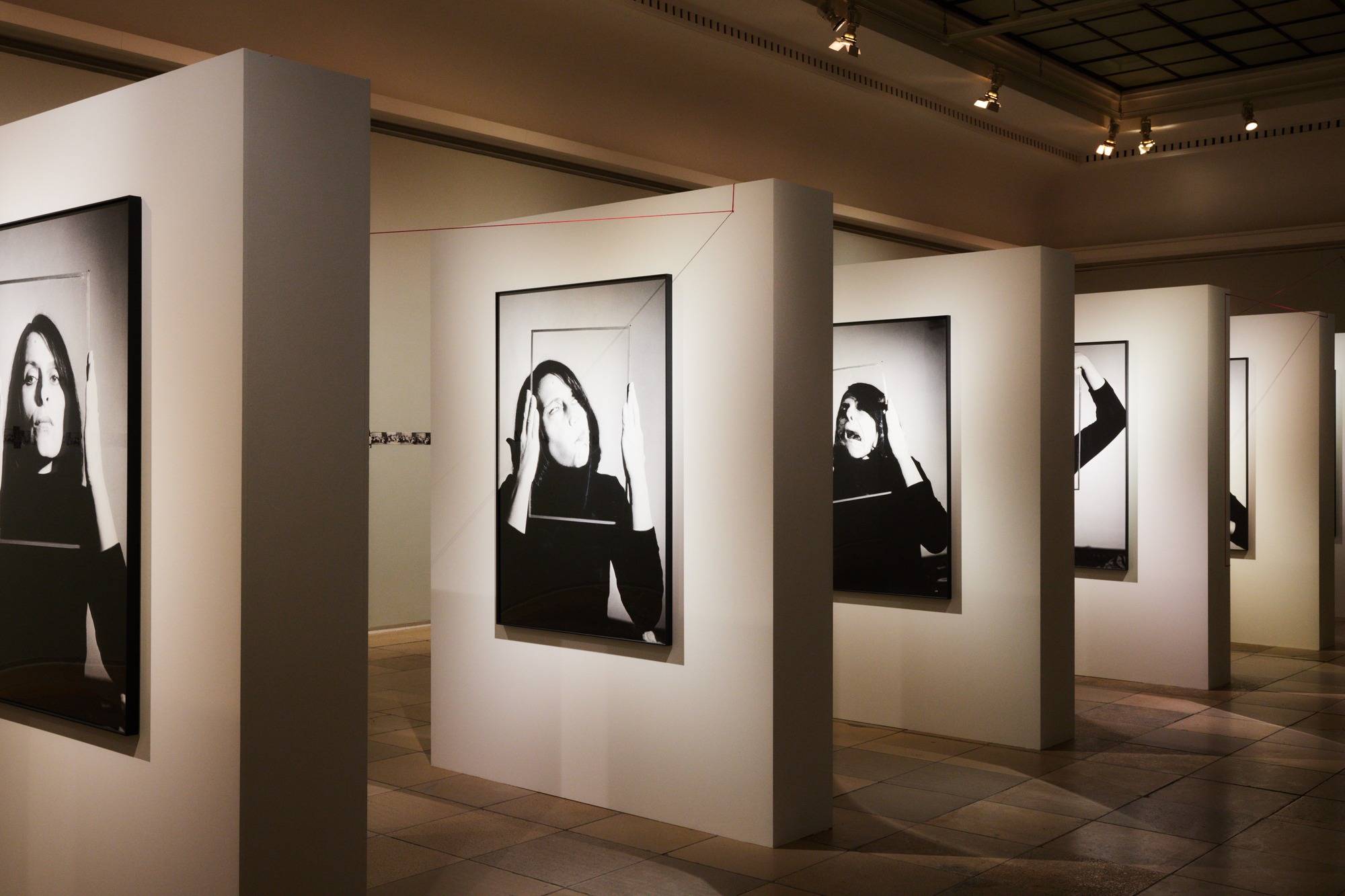
Katalin Ladik. Ooooooooo-pus
Installationsansicht / Installation view
Haus der Kunst, 2023
Foto: Julian Baumann
Installationsansicht / Installation view
Haus der Kunst, 2023
Foto: Julian Baumann

Katalin Ladik. Ooooooooo-pus
Installationsansicht / Installation view
Haus der Kunst, 2023
Foto: Julian Baumann
Installationsansicht / Installation view
Haus der Kunst, 2023
Foto: Julian Baumann

Katalin Ladik. Ooooooooo-pus
Installationsansicht / Installation view
Haus der Kunst, 2023
Foto: Julian Baumann
Installationsansicht / Installation view
Haus der Kunst, 2023
Foto: Julian Baumann
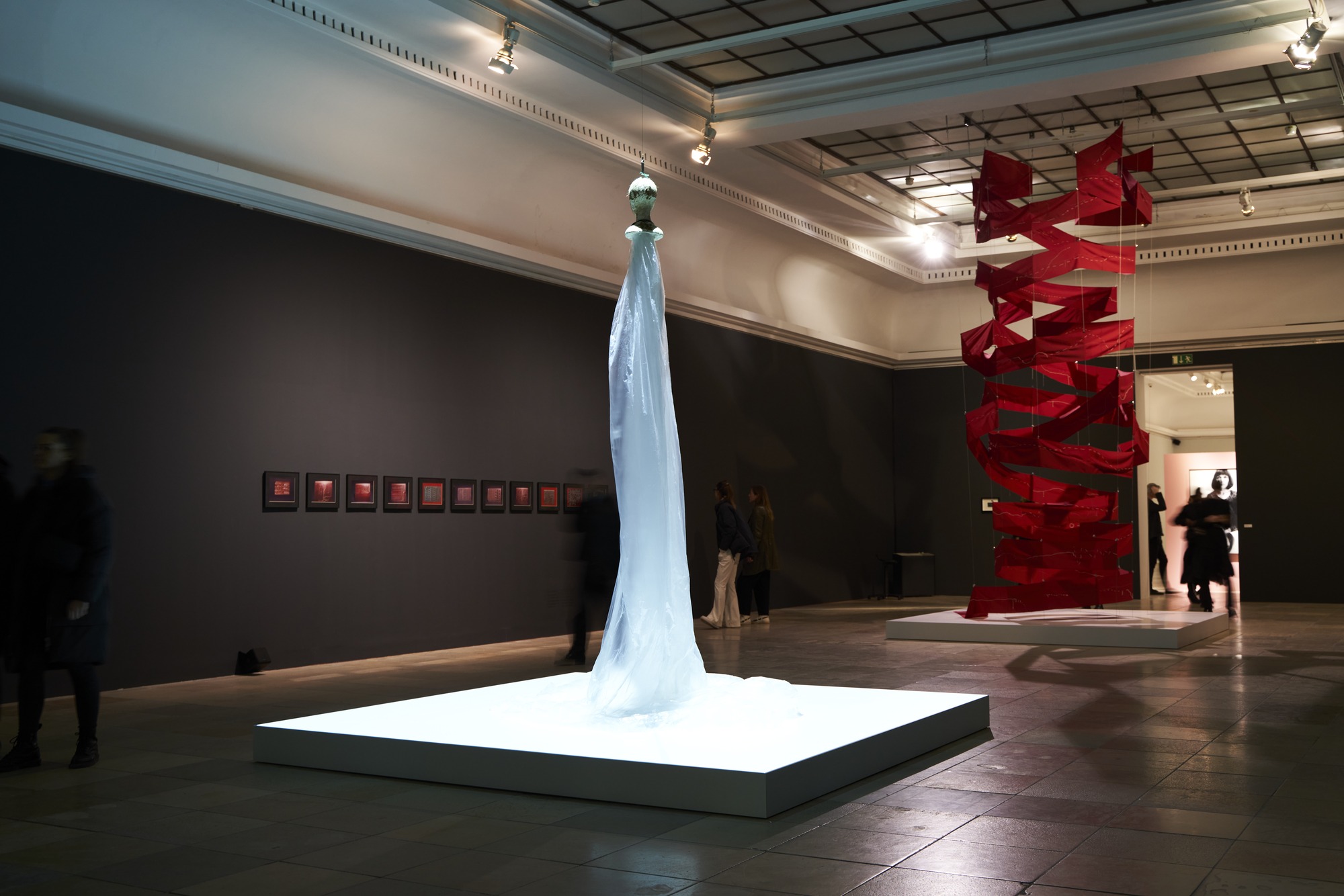
Katalin Ladik. Ooooooooo-pus
Installationsansicht / Installation view
Haus der Kunst, 2023
Foto: Milena Wojhan
Installationsansicht / Installation view
Haus der Kunst, 2023
Foto: Milena Wojhan
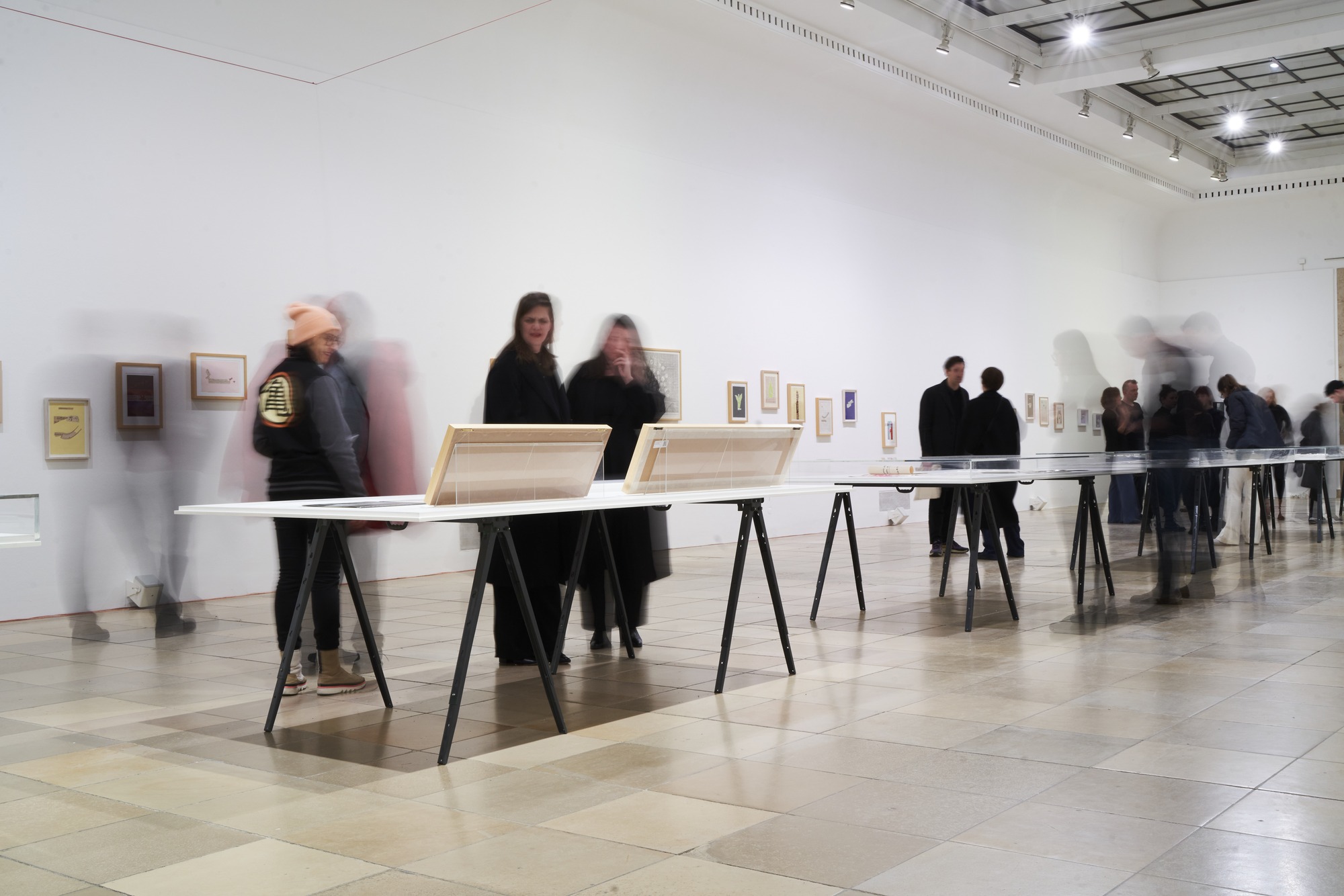
Katalin Ladik. Ooooooooo-pus
Installationsansicht / Installation view
Haus der Kunst, 2023
Foto: Milena Wojhan
Installationsansicht / Installation view
Haus der Kunst, 2023
Foto: Milena Wojhan

Katalin Ladik. Ooooooooo-pus
Installationsansicht / Installation view
Haus der Kunst, 2023
Foto: Milena Wojhan
Installationsansicht / Installation view
Haus der Kunst, 2023
Foto: Milena Wojhan

Katalin Ladik. Ooooooooo-pus
Installationsansicht / Installation view
Haus der Kunst, 2023
Foto: Julian Baumann
Installationsansicht / Installation view
Haus der Kunst, 2023
Foto: Julian Baumann
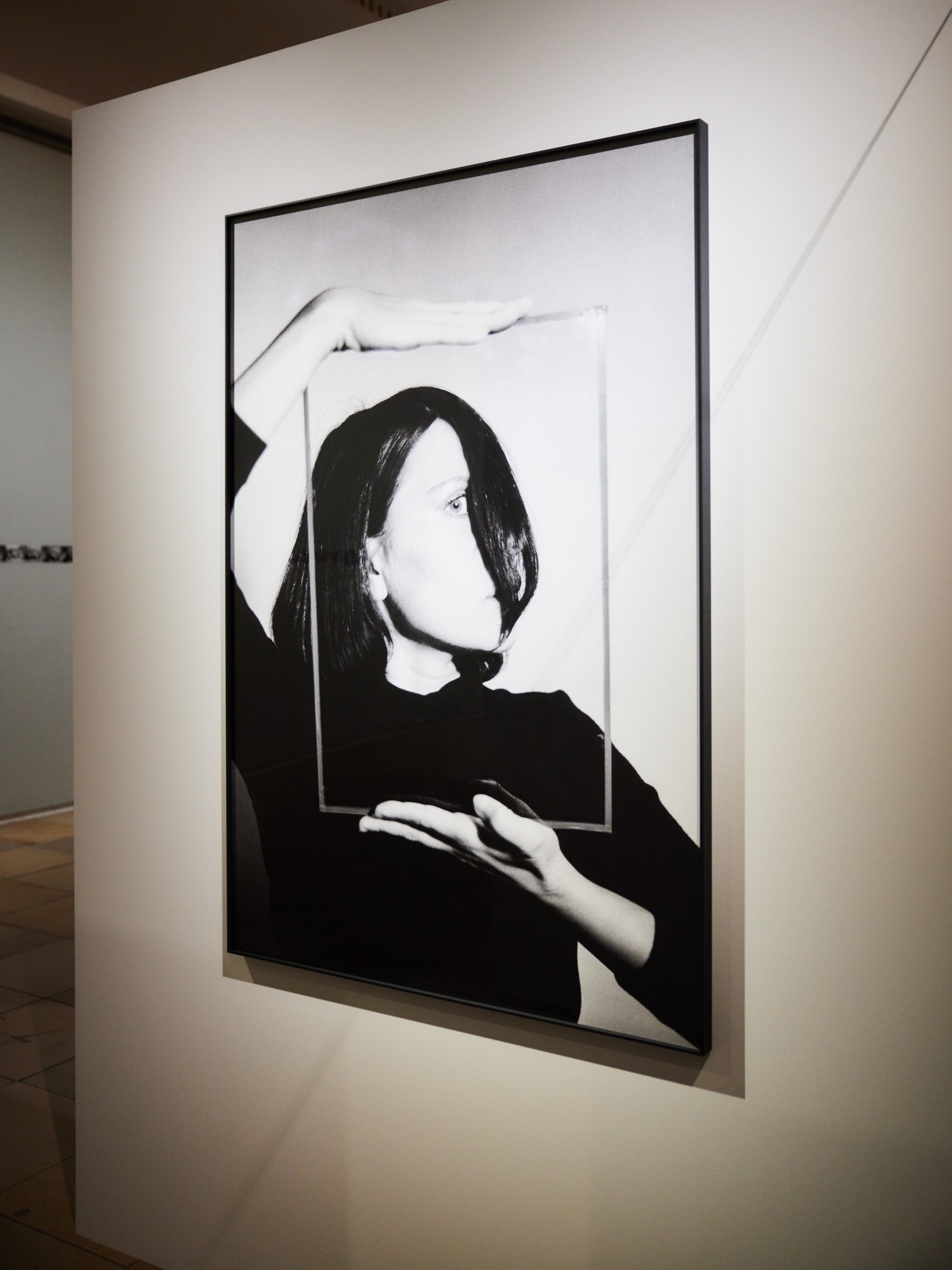
Katalin Ladik. Ooooooooo-pus
Installationsansicht / Installation view
Haus der Kunst, 2023
Foto: Julian Baumann
Installationsansicht / Installation view
Haus der Kunst, 2023
Foto: Julian Baumann
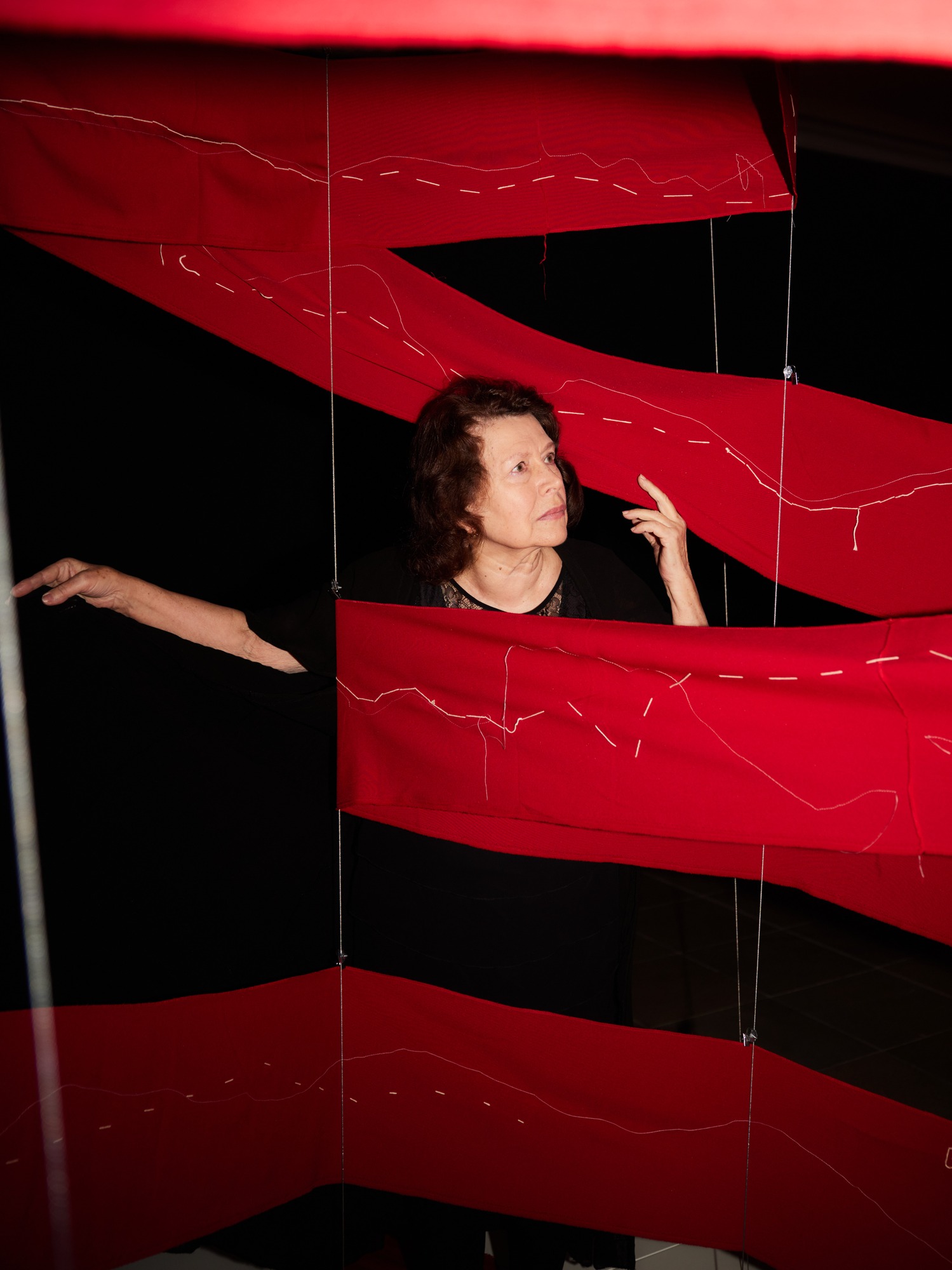
Katalin Ladik. Ooooooooo-pus
Installationsansicht / Installation view
Haus der Kunst, 2023
Foto: Julian Baumann
Installationsansicht / Installation view
Haus der Kunst, 2023
Foto: Julian Baumann
“If we are the most vulnerable in our poetry, we shall pour our whole bodies into it.” – Katalin Ladik
“Ooooooooo-pus” at Haus der Kunst is the first survey exhibition in Germany of the work of Katalin Ladik (b. 1942, Novi Sad). Her radical approach to concrete and visual poetry, performance, and sound established her as a key figure in Central and Eastern European art. Ladik was born in 1942 in Novi Sad, a city in former Yugoslavia (now Serbia) that has long been a conduit between the Balkans and parts of Central and Eastern Europe. The multilingual demographics of Novi Sad—being majority Serbian and Hungarian—shaped Ladik’s visual approach to language and poetry.
Over the course of the 1960s, Ladik became an integral part of the Novi Sad literary and artistic avant-garde. She positioned herself at the intersection of various established and new performance traditions engaging in happenings, rituals, and photo-performance. Ladik, who was also successful as a film and stage actress, often played feminine ideals, draws on folkloric and mythological themes to challenge gender roles and female archetypes, using her body and voice as both instrument and medium.
For Ladik, the body engenders poetry. It is a site of self-representation that she has consistently explored in her performances from the 1960s onward. Her visual poems—collages that include sewing patterns, sheet music, and found objects such as circuit boards from radios and kitchen appliances—function also as musical scores. They explore connections between the voice and image while expanding language through phonetic experiments. The exhibition includes two new works commissioned for the occasion: a sculptural score with corresponding sound and an installation that derives from Ladik’s multimedia performance Alice in Codeland.
In the exhibition, a red thread leads from Ladik’s sewing machine in the first room through the entire exhibition to her sculpture Follow me into Mythology (2017). Another conduit is the sound, which is central to Haus der Kunst’s 2023 programme, and which forms the connective tissue of Ladik’s multifaceted oeuvre. Each of the exhibition’s three rooms has its own soundscape based on Ladik’s visual and phonic poetry, making “Ooooooooopus” an exhibition that needs to be heard as much as to be seen. Followed by “Meredith Monk: Calling”, this exhibition presents a new exhibition model at Haus der Kunst for displaying ground-breaking practices based on the audible.
Performance
As part of TUNE, Katalin Ladik will perform live at Haus der Kunst on 14 and 15 July. One performance will lead through the exhibition "Ooooooooo-pus" in the Nordgalerie, a second performance is dedicated to Ladik's collaboration with the composer Svetlana Maraš, followed by an artist talk.
Curators
Sarah Johanna Theurer (Curator Haus der Kunst München) and Hendrik Folkerts (Curator of International Contemporary Art and Head of Exhibitions, Moderna Museet, Stockholm) with Manuela Hillmann (Curatorial Fellow Haus der Kunst München).
The exhibition is co-organised by Haus der Kunst München, Ludwig Forum, Aachen, and Moderna Museet, Stockholm. “Katalin Ladik. Ooooooooo-pus” will travel to Aachen at the end of 2023 and to Stockholm in 2024.
About Katalin Ladik
Katalin Ladik, born 1942 in Novi Sad, former Yugoslavia, is a poet, performance artist, actress, and a renowned key figure of the 1970s avant-garde of Central and Eastern Europe. Her works of concrete, visual, and phonic poetry, as well as her multimedia performances, expand and question language and its social codes.
Ladik began her literary career in 1962, while working as an assistant in a bank. From 1963 to 1977, she worked at Radio Novi Sad, producing audio plays while studying theatre at Dramski Studio. In 1974, she joined the newly established Novi Sad Theatre, where she was a permanent ensemble member until 1992. Moreover, she appeared in several cinema and film productions. In 1969, her first poetry collection, Ballad of the Silver Bicycle, was published with a supplementary gramophone record, featuring Ladik’s recitations of selected poems. As a consequence of her performance in Budapest of Shaman Chant a scandal erupted in 1970, resulting in Ladik’s expulsion from the Communist Party on accusations of moral misconduct, and her stigmatisation in the press as “the naked poetess”.
In collaboration with the artists Attila Csernik and Imre Póth, the experimental film O-pus was created in 1972. Her first record, Phonopoetica, was released 1976 featuring vocal interpretations of poems by artists such as Bálint Szombathy. Ladik’s visual poems and collages were exhibited as part of the 38th Venice Biennale in 1978. As a singer, Ladik has worked together with outstanding figures from the field of experimental, and electro-acoustic music, including Ernő Király, the ensemble Acezantez, and Svetlana Maraš. During the disintegration of Yugoslavia, Ladik fled to Budapest in 1992.
In 2010, the Museum of Contemporary Art Vojvodina presented the first retrospective of Ladik's work. The performance Transit Zoon (2015) addresses questions of national identity, an important motif in her artistic practice. In 2017, her work was on display at documenta 14 in Kassel and in Athens.
Ladik, who was previously unable to pursue teaching opportunities due to political exclusion, conducted a class in free improvisation at the Basel Music Academy as a guest lecturer in 2019. In addition to numerous literary awards, she was honoured with the Lennon Ono Grant for Peace in 2021, and the Hungarian Order of Merit Officer's Cross in 2022. Currently, Ladik lives in Budapest as well as on the island of Hvar in Croatia.
“Ooooooooo-pus” at Haus der Kunst is the first survey exhibition in Germany of the work of Katalin Ladik (b. 1942, Novi Sad). Her radical approach to concrete and visual poetry, performance, and sound established her as a key figure in Central and Eastern European art. Ladik was born in 1942 in Novi Sad, a city in former Yugoslavia (now Serbia) that has long been a conduit between the Balkans and parts of Central and Eastern Europe. The multilingual demographics of Novi Sad—being majority Serbian and Hungarian—shaped Ladik’s visual approach to language and poetry.
Over the course of the 1960s, Ladik became an integral part of the Novi Sad literary and artistic avant-garde. She positioned herself at the intersection of various established and new performance traditions engaging in happenings, rituals, and photo-performance. Ladik, who was also successful as a film and stage actress, often played feminine ideals, draws on folkloric and mythological themes to challenge gender roles and female archetypes, using her body and voice as both instrument and medium.
For Ladik, the body engenders poetry. It is a site of self-representation that she has consistently explored in her performances from the 1960s onward. Her visual poems—collages that include sewing patterns, sheet music, and found objects such as circuit boards from radios and kitchen appliances—function also as musical scores. They explore connections between the voice and image while expanding language through phonetic experiments. The exhibition includes two new works commissioned for the occasion: a sculptural score with corresponding sound and an installation that derives from Ladik’s multimedia performance Alice in Codeland.
In the exhibition, a red thread leads from Ladik’s sewing machine in the first room through the entire exhibition to her sculpture Follow me into Mythology (2017). Another conduit is the sound, which is central to Haus der Kunst’s 2023 programme, and which forms the connective tissue of Ladik’s multifaceted oeuvre. Each of the exhibition’s three rooms has its own soundscape based on Ladik’s visual and phonic poetry, making “Ooooooooopus” an exhibition that needs to be heard as much as to be seen. Followed by “Meredith Monk: Calling”, this exhibition presents a new exhibition model at Haus der Kunst for displaying ground-breaking practices based on the audible.
Performance
As part of TUNE, Katalin Ladik will perform live at Haus der Kunst on 14 and 15 July. One performance will lead through the exhibition "Ooooooooo-pus" in the Nordgalerie, a second performance is dedicated to Ladik's collaboration with the composer Svetlana Maraš, followed by an artist talk.
Curators
Sarah Johanna Theurer (Curator Haus der Kunst München) and Hendrik Folkerts (Curator of International Contemporary Art and Head of Exhibitions, Moderna Museet, Stockholm) with Manuela Hillmann (Curatorial Fellow Haus der Kunst München).
The exhibition is co-organised by Haus der Kunst München, Ludwig Forum, Aachen, and Moderna Museet, Stockholm. “Katalin Ladik. Ooooooooo-pus” will travel to Aachen at the end of 2023 and to Stockholm in 2024.
About Katalin Ladik
Katalin Ladik, born 1942 in Novi Sad, former Yugoslavia, is a poet, performance artist, actress, and a renowned key figure of the 1970s avant-garde of Central and Eastern Europe. Her works of concrete, visual, and phonic poetry, as well as her multimedia performances, expand and question language and its social codes.
Ladik began her literary career in 1962, while working as an assistant in a bank. From 1963 to 1977, she worked at Radio Novi Sad, producing audio plays while studying theatre at Dramski Studio. In 1974, she joined the newly established Novi Sad Theatre, where she was a permanent ensemble member until 1992. Moreover, she appeared in several cinema and film productions. In 1969, her first poetry collection, Ballad of the Silver Bicycle, was published with a supplementary gramophone record, featuring Ladik’s recitations of selected poems. As a consequence of her performance in Budapest of Shaman Chant a scandal erupted in 1970, resulting in Ladik’s expulsion from the Communist Party on accusations of moral misconduct, and her stigmatisation in the press as “the naked poetess”.
In collaboration with the artists Attila Csernik and Imre Póth, the experimental film O-pus was created in 1972. Her first record, Phonopoetica, was released 1976 featuring vocal interpretations of poems by artists such as Bálint Szombathy. Ladik’s visual poems and collages were exhibited as part of the 38th Venice Biennale in 1978. As a singer, Ladik has worked together with outstanding figures from the field of experimental, and electro-acoustic music, including Ernő Király, the ensemble Acezantez, and Svetlana Maraš. During the disintegration of Yugoslavia, Ladik fled to Budapest in 1992.
In 2010, the Museum of Contemporary Art Vojvodina presented the first retrospective of Ladik's work. The performance Transit Zoon (2015) addresses questions of national identity, an important motif in her artistic practice. In 2017, her work was on display at documenta 14 in Kassel and in Athens.
Ladik, who was previously unable to pursue teaching opportunities due to political exclusion, conducted a class in free improvisation at the Basel Music Academy as a guest lecturer in 2019. In addition to numerous literary awards, she was honoured with the Lennon Ono Grant for Peace in 2021, and the Hungarian Order of Merit Officer's Cross in 2022. Currently, Ladik lives in Budapest as well as on the island of Hvar in Croatia.
